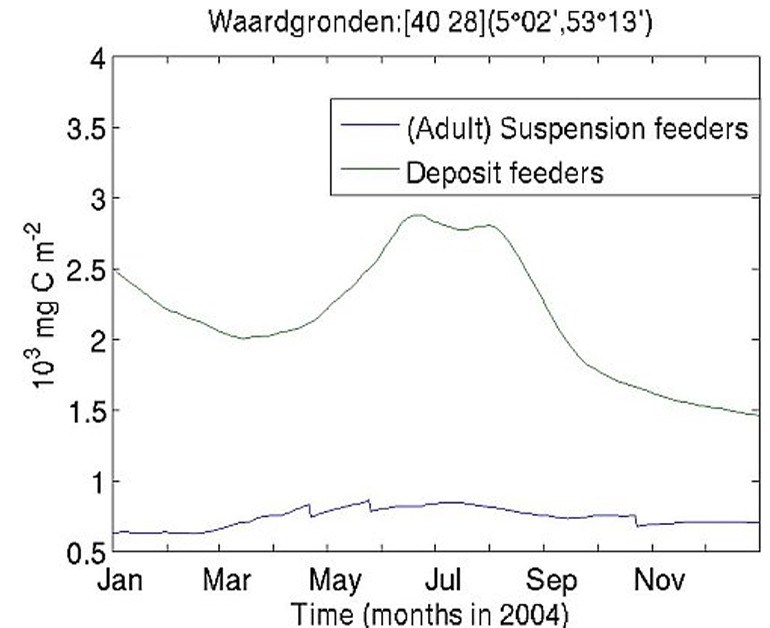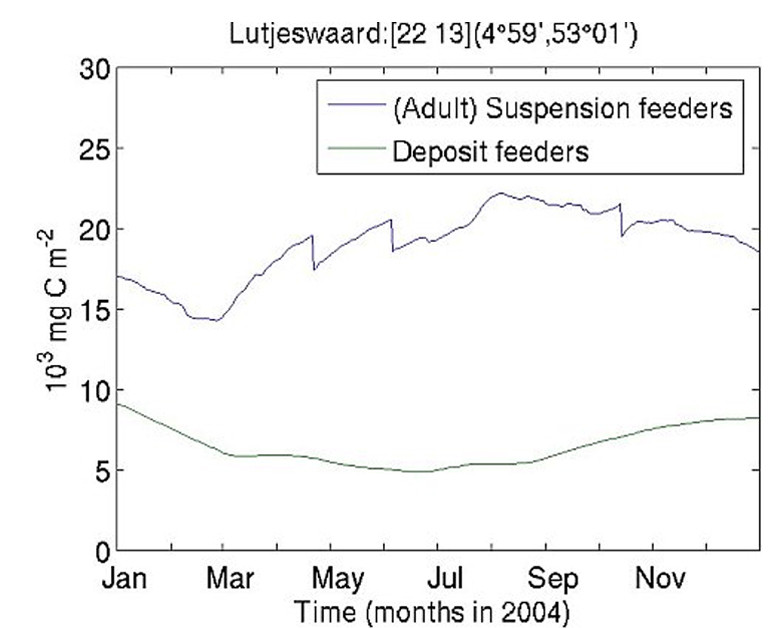Macrobenthos Dynamics

Differences
The differences between the seasonal biomass development of filter-feeders and deposit feeders in the Lutjeswaard and the Waardgronden are significant: the growth of the deposit-feeders takes place in spring on the Waardgronden but on the Lutjeswaard only in autumn. an area close to a large tidal gully (the Lutjeswaard) the biomasses of both filter-feeders and deposit-feeders are much higher than on the Waardgronden, which lies further away from large tidal channelsHowever the deposit-feeders reach relatively higher concentrations on the Waardgronden than the filterfeeders . This in contrast to the Lutjeswaard.
The growth of the deposit-feeders takes place in spring on the Waardgronden but on the Lutjeswaard only in autumn.
These differences can be explained by the much larger input of particulate organic carbon from the pelagic in Lutjeswaard than on the Waardgronden. Because the main input of particulate material to the sediment of the Lutjeswaard is detritus, with a relatively slow degradation rate, first in september the deposit feeders begin to increase in biomass. On the Waardgronden the main food source are the benthic diatoms and there we see a clear biomass peak in the spring.

Information
![Lutjeswaard-site (L]), and Waardgronden (W). Lutjeswaard-site (L]), and Waardgronden (W).](/application/files/3714/9191/4162/cos-ecosystem-modelling-ws-waardgronden-wl.jpg)